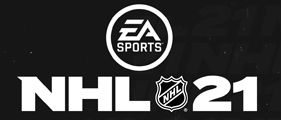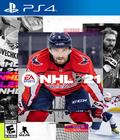With COVID-19, the world has been trying to adapt to the new normal of working from home, maintaining safe distances, and wearing masks. Not everything has changed, though: EA's sports titles keep dropping to maintain some normalcy in our lives, and NHL 21 is no exception.
NHL 21 released one month later than usual, most likely due to the NHL season starting late. While that likely did not mean more development time for this entry, this year's improvements feel meatier than recent installments — although that doesn't necessarily mean much. Some long-overdue improvements have finally arrived, but the final product feels more like an overpriced refresh than a worthy reason to upgrade from NHL 20. Some of the most exciting additions, such as the revamped Be A Pro mode, are bogged down by bugs and offer little else to sink your teeth into.
Updates to yearly sports titles are never groundbreaking, but compared to FIFA or Madden, NHL seemed in especially dire straits with fewer sales and less budget to make meaningful improvements year over year. With these expectations firmly in place, I was still cautiously excited at the announcement that EA would finally spend some time on its Be A Pro career mode, which is several years overdue at this point. Developer EA Vancouver also promised improved animations and AI, new dekes, new game modes, and minor improvements all around. However, what has not changed is the overall presentation and foundation. If you had hoped for an overhaul with next-gen consoles on the horizon, you might want to pass on NHL 21 because the base game still feels and looks unchanged.
Let's start with general gameplay improvements, with a focus on AI and goaltending. I'm happy to say that the AI has improved across the board. In the offensive zone, your teammates will make mostly intelligent plays and be in position to wait for the pass to set up scoring chances. Entering the offensive zone is also more challenging in NHL 21, since opponents have a much better awareness of the puck carrier to cut off entry routes into their defensive third.
On the flip side, the AI is still lacking on the defense. AI teammates will make horrible decisions. When in puck possession, they frequently turn over pucks or choose to wedge it to the boards rather than carrying it out of the zone. Equally, when the AI tries to enter the zone on its own, pucks are often and regularly turned over. Again, it is a huge step up from the downright devastating decisions that AI companions made in previous years, but there's still room for improvement.
Goaltending has also seen some renovations, but they feel relatively minor in-game. The main way to score goals is to be the good old one-timer like it's always been, with snap or slapshots sometimes being much harder to push over the line.
As for AI improvements, NHL 21 also introduces a few new animations and dekes into the mix. Animations, especially individual skating animations, look much more animated and natural in this iteration. Coupled with NHL 20's maneuverability improvements, NHL 21 feels very smooth to play, even though not much else has changed. There are new dekes and methods to chip pucks ahead, which is a countermeasure to zone entries being tougher against the AI. There are some signature dekes to shake opponents and score signature goals, like a lacrosse-style goal. The goal dekes are well balanced (read: hard to pull off in the action), so they're a rare occurrence rather than a guaranteed goal. Generally, these additions are good decisions to enhance the core gameplay, but the game looks and feels like it did six years ago — which is to say that it's at least three years too old. I've had as much fun as ever actually playing the game, so this year's version is a solid foundation to make the jump to the next generation.
The biggest feature addition in NHL 21 is the Be A Pro mode, which has been neglected for several years. What used to be an incoherent string of games is now playable and engaging with a somewhat guided trajectory that includes challenges, commentary, and events as you build your NHL legacy. After creating a digital representation, we have the choice to start in a lower league or overseas in Europe in the weeks leading up to the NHL draft. Once drafted, your adventure begins. Your efforts on and off the ice determine how quickly your career progresses. The game introduces three areas of evaluation: overall brand (followers), management likeability, and team likeability. These scores are based on your on-ice performance and how you behave off of the ice. Reporters will ask for statements, and your manager and teammates will expect certain things from you or challenge you to perform specific actions on the ice. These changes alone turn a lackluster experience into a much more engaging mode.
Unfortunately, most of the changes can feel incredibly shallow and even broken at times. As you progress in Be A Pro and invest in skill trees, you will get better on the ice and gain a few more reply options in conversations. The basic options usually involve being a team player or being a superstar, which essentially means replying to questions in a boastful or humble manner. It was sometimes difficult to navigate the binary dialogues options. Within our first couple of hours in Be A Pro mode, we faced several little bugs that had varying impacts on our enjoyment of the mode. There were minor things, such as sometimes being unable to simulate the time between your shifts, the event tracker on the overview screen visibly clipping, and some graphics completely overlapping if you start simulating the game while a cut scene plays.
Much more impactful were issues with your game performance ratings. There were challenges my coach wanted me to complete, such as get an offensive A-minus rating in your next game. We got a straight-A, basically overperforming, and yet the game marked the challenge as failed, causing us to get a lower rating and even being moved down a line — all while being the top scorer of our team as the rookie for five straight games. There are frequent, odd disconnects between your actual performance and your performance rating. Minor mistakes, some of which are not in your control, frequently overpower even the strongest on-ice achievements, making it frustrating to play.
Another example is line changes on the ice. When you get on the ice during a line change, NHL 21 might place you on the offensive line, but the perspective changes at the same time from the first-person perspective to the overhead perspective, while often introducing visible frame rate stutter. It can be disorientating and often cause you to be offside with no time to react since the game starts you in an unfavorable position that you cannot quickly get out of. With the draconian punishment of minor infractions, things can quickly become frustrating. Overall, I still enjoyed the fact that there is much more to do and see this year in Be A Pro mode, but it still has a long way to go. Other additions, such as the new commentary, turned out pretty well, with situation-specific interviews and opinion pieces playing in the background as your rookie becomes a seasoned NHL player, but it's not enough to cancel out the overall rough state.
This is not all there is to see this year, but the improvements get increasingly minor, such as improved trade deadline actions in Franchise mode, training exercises and seasons in its competitive team-based CHEL, and additions to Hockey Ultimate Team (HUT), all of which haven't changed much otherwise. There is one further new mode to talk about in HUT, HUT Rush, which is essentially a culmination of previous drafts and the 3v3 mode, Threes. At present, there are two modes where you can draft a three-player team to complete challenges both on- and offline, with an emphasis on skillful play. Anything from dekes to goals to body checks earns points that are added together via challenges and multipliers that rank you up over time and offer the usual HUT rewards to improve your team. It's a fun and short mode, but it's not as substantial in the grand scheme of things, since it's a reskinned and repurposed mode that previously existed — just not directly in HUT. There are additional quality of life improvements, such as a clearer way to show and manage player synergies in your team and the absence of contracts and healing items, since they became useless in recent years. Otherwise, HUT is still as much pay-to-win as it's always been (unless you grind), but if you played previous titles, you probably know how you feel about HUT.
The rest of the presentation, both audio and visual, is pretty much the same as it has always been. It shows its age, but it usually runs well enough, with the few exceptions we have mentioned above. The commentary is still far too simple and repetitive and, apart from a UI reskin, there isn't much new to see here. It's not a surprise, but it's not exactly great news, either.
Adding up all of the changes between NHL 20 and NHL 21, it's still hard to justify the full-price release in comparison to what's new this year. I appreciate the focus on the Be A Pro mode, but there is still a lot of work to be done to improve its consistency and reduce frustrating and demotivating moments and bugs across the entire experience. The gameplay feels like it did a small leap forward with some basic AI and animation improvements, making NHL 21 very fun and smooth to play, but it's not enough to hide its aging foundation. I sincerely hope the franchise can make up ground with its next entry and, hopefully, an improved engine. If you are a dedicated fan or have skipped several of the previous entries, NHL 21 is a solid purchase, but otherwise, there isn't enough here to justify the price tag.
Score: 6.8/10
More articles about NHL 21











 NHL 21 brings to life a revamped Be A Pro experience, expanded creative gameplay, the new Hockey Ultimate Team (HUT) RUSH, and World of CHEL additions offering players the opportunity to create their own style and legacy.
NHL 21 brings to life a revamped Be A Pro experience, expanded creative gameplay, the new Hockey Ultimate Team (HUT) RUSH, and World of CHEL additions offering players the opportunity to create their own style and legacy.









